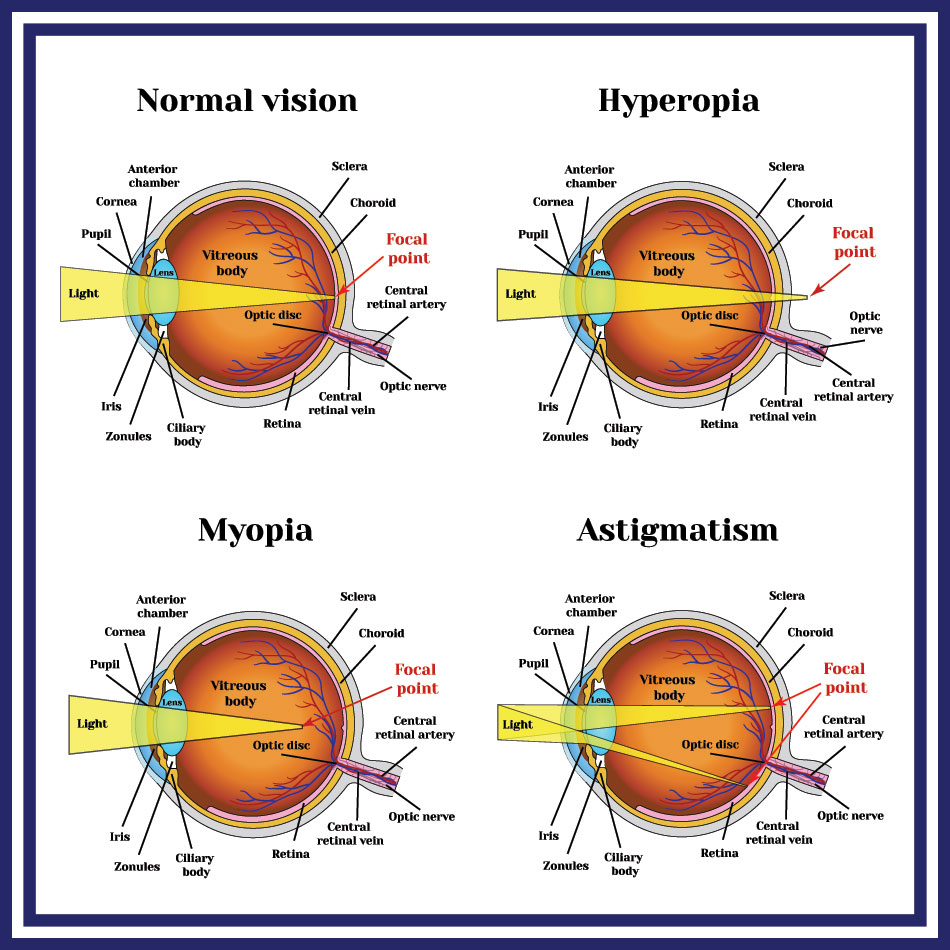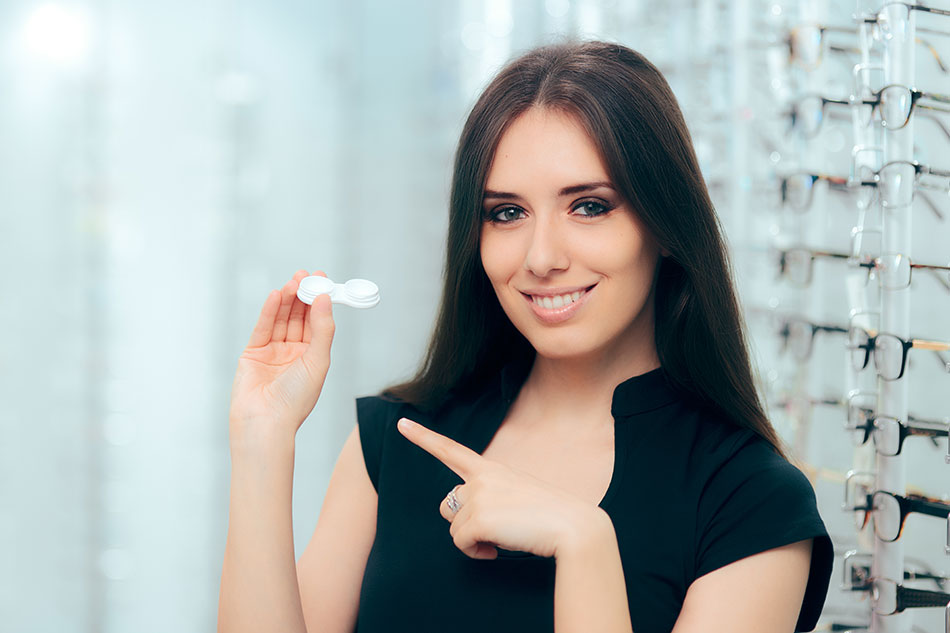How Do Contact Lenses Work? The Science Behind Them

Vision problems are pretty common in America. About 188.7 million people in the U.S. use some kind of vision correction device. That's over half the population of America!
Contact lenses are a popular choice of vision correction. They are thin plastic discs that sit directly on the corneas of your eyes. But how do contact lenses work? What makes them different from glasses and why should you use them? They might seem stressful, scary or even dangerous. However, we can tell you they’re quite safe.
Join us as we explore the science behind these corrective lenses. You’ll see you have nothing to worry about. Let's dive in!
Explaining Contact Lenses
Increasingly more people are turning to contact lenses for vision correction in their daily lives. The choice may be due to lifestyle or cosmetic considerations. Therefore, switching to contacts can offer you the convenience of a glasses-free life. Soft contact lenses were first introduced in the 1970s and the number of users continues to increase each decade.
Read on for a quick rundown on the history of contacts. We’ll also discuss how contact lenses work. In addition, you’ll learn the best practices for the care and use of your lenses. Above all, you’ll see why you should consider using these convenient vision correction aids!
The History of Contact Lenses

Contact lenses were first invented in the late 1800s. The earliest contacts consisted of blown glass and were very painful to wear. The next development came in the 1930s/1940s, which brought hard plastic contacts. These were a lot more comfortable, but still didn't absorb water or allow enough oxygen to pass through the lens to the eye.
In 1971, soft contact lens officially hit America. Soft plastic lenses are more flexible and easy to wear. They also absorb water, which helps them to increase oxygen flow to the eyes.
In 1982, a man from Denmark invented disposable lenses. The next breakthrough didn't come until 1995, when daily disposable contact lenses made it onto the market.
New technology and advances in contacts have led to a wide variety of them. Contact lenses are more comfortable than ever. They are generally made of silicone hydrogel, which retains its moisture after long periods of time.
You can even purchase colored contact lenses. They still allow for clear vision but can give your irises any hue that you'd like. All the colors of the rainbow are available to you!
Eye Problems and Vision Correction

With normal vision, light enters the cornea and focuses onto a single point on the retina. This is at the back of the eye.
Issues with vision tend to occur when the cornea doesn't focus properly, usually because of its shape. Or there may be issues with adjusting the curve of the natural lens. You might know about the common vision disorders of nearsightedness or farsightedness. However, eye problems come in a wide range of different issues. Similarly, there are a lot of different solutions.
Here are some of the vision problems that contact lenses can correct:
Myopia
Myopia is also known as nearsightedness. This means that you can see objects up close, but your distance vision is blurry. This occurs when the eyeball is too long, leading to light focusing in front of the retina.
Hyperopia
Hyperopia is also known as farsightedness. This means that your distance vision is fine, but objects up close will be blurry. This occurs when the eyeball is too short, so light focuses behind the retina.
Astigmatism
Irregularly shaped corneas cause astigmatism. This distortion causes light to focus at several different points along the back of the eye. It's corrected with lenses that have varying degrees of thickness and curvature across the lens. It all depends on the person's specific vision requirements.
Presbyopia
Presbyopia occurs when an individual struggles with focusing on nearby objects. This is due to the lens losing elasticity. So this problem occurs more often in the elderly. It’s usually corrected with bifocal and multifocal lenses.
How Contact Lenses Work

Contact lenses are designed to capture and reflect light in a manner that corrects the way your eyes process light. Once the contact is in, it redirects light into a single focal point on the retina. It's similar to a magnifying glass. It fine-tunes and focuses the light that enters your eyes.
For nearsightedness, the lenses are thicker on the outer edges and thinner in the middle. So the light spreads away from the center of the lens. For farsightedness, it's the opposite. The thickest part of the lens is in the middle to bend light towards the center.
Are Contact Lenses Safe?

When used correctly, contact lenses are a perfectly safe alternative to traditional eyeglasses. If your lenses are the right fit, you shouldn't even feel them in your eyes at all. They move with them, so you don't have to worry about your contacts sliding or falling out of place.
While contacts are safe when used correctly, there are risks involved if you don't follow care instructions. In particular, your hands must always be clean and dry before handling your contact lenses. Each evening, you should remove, clean and store your multiple-use contacts. Always replace your lenses when instructed, whether it's a daily, weekly or monthly schedule.
Change your storage solution every day and never use water as a substitute. Also, clean the lenses with extra solution before you put them in your eyes. You must also disinfect your contact case each morning and leave it to air-dry in a clean, non-humid environment. Similarly, you need to replace the case every three months.
The Bottom Line
We've come a long way when it comes to contact lens technology. These days, you can get the perfect type of lens to suit your eyes and correct your vision with little to no risk involved.
So we’ve answered your questions of “How do contact lenses work?” and “Are they safe to use in your eyes?” If you have more questions, then check out our blog for more information.
Ready to order some contacts? Then feel free to browse our wide selection online in order to find the right contact lenses for you!